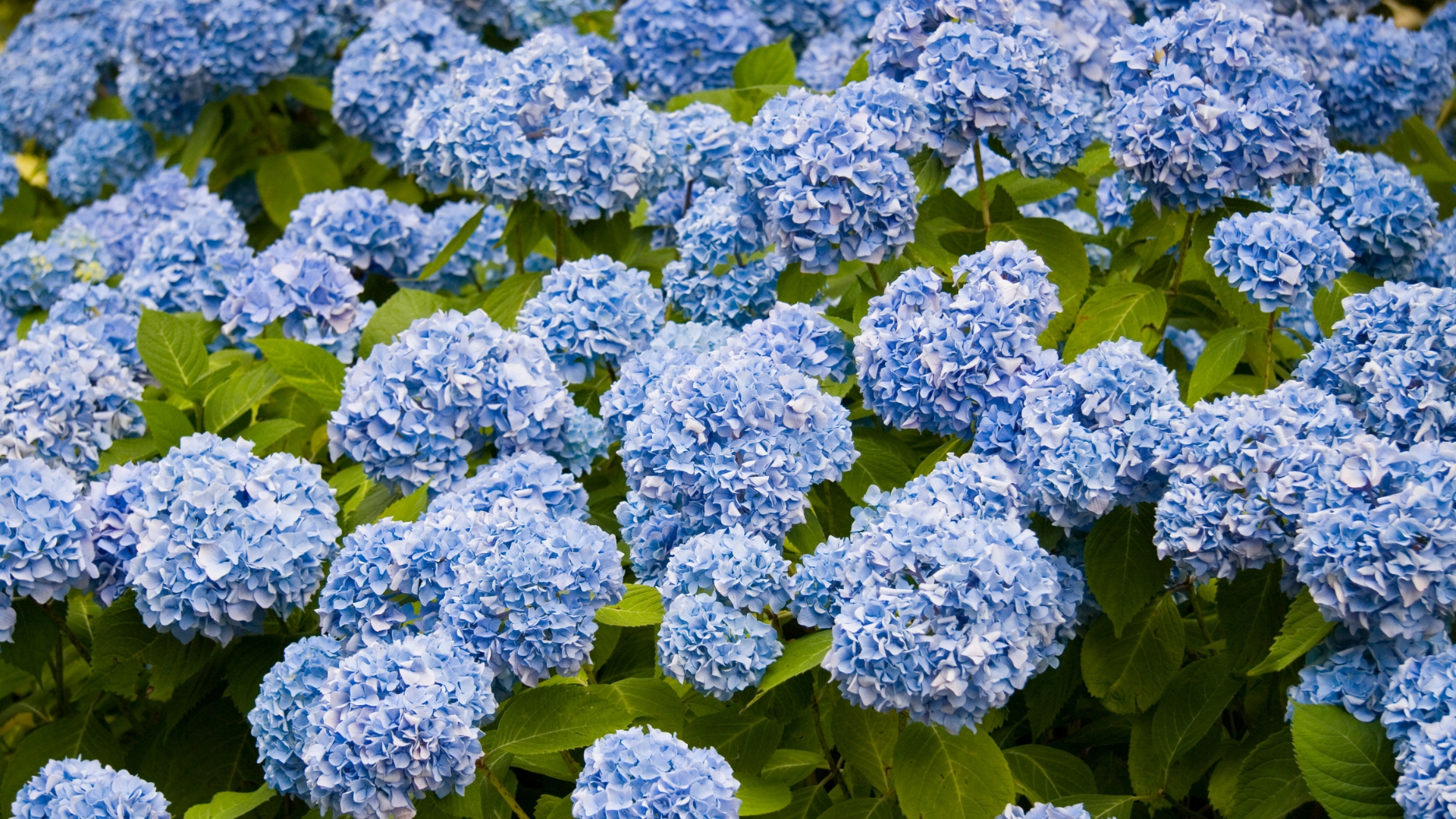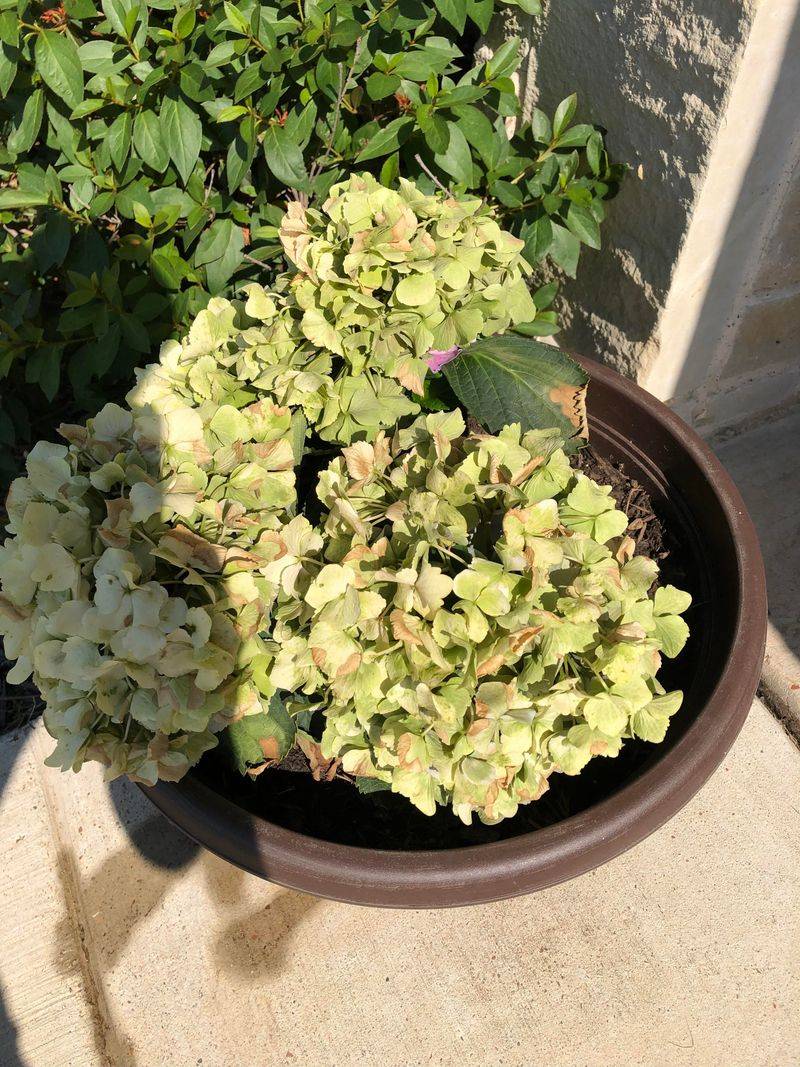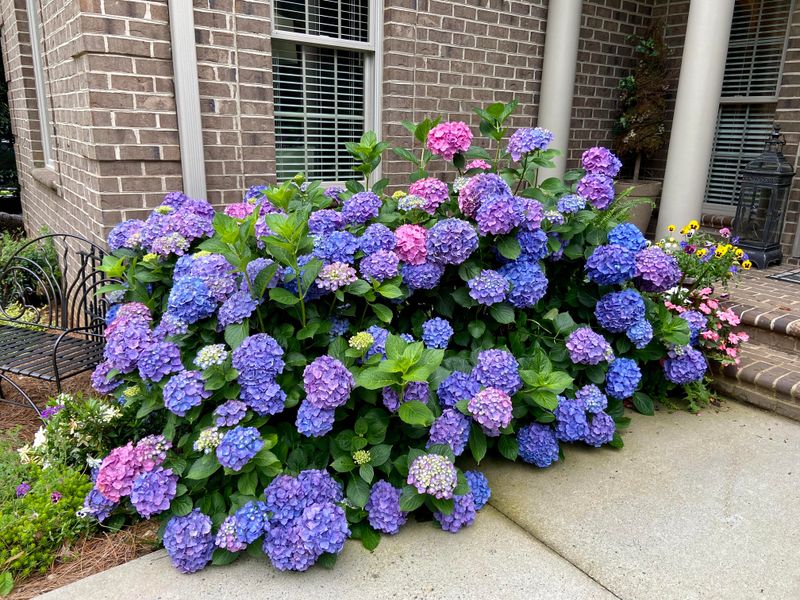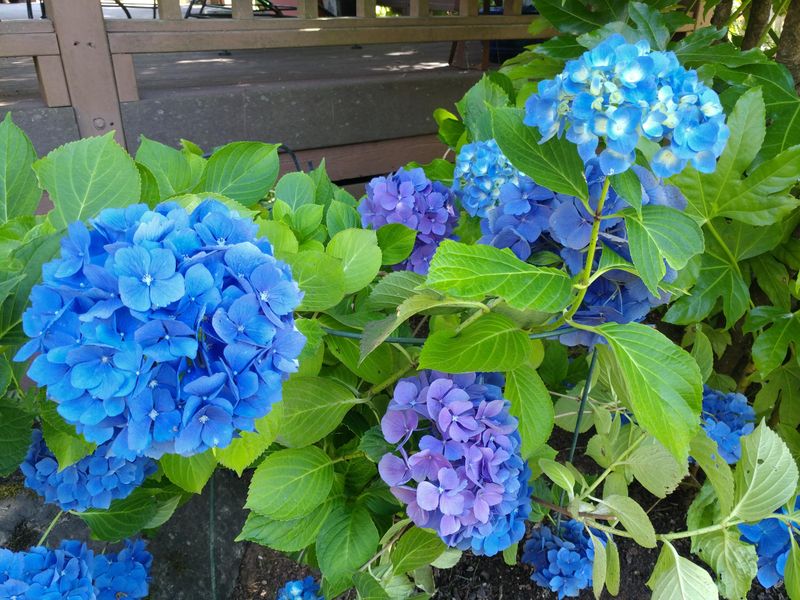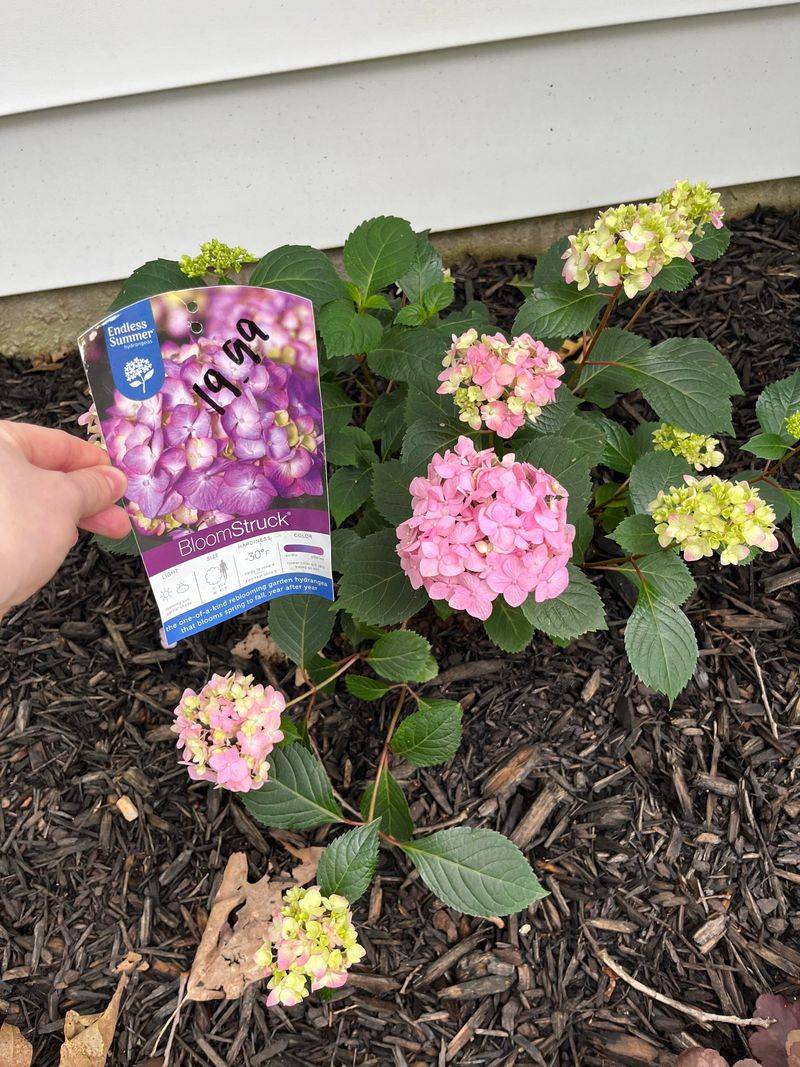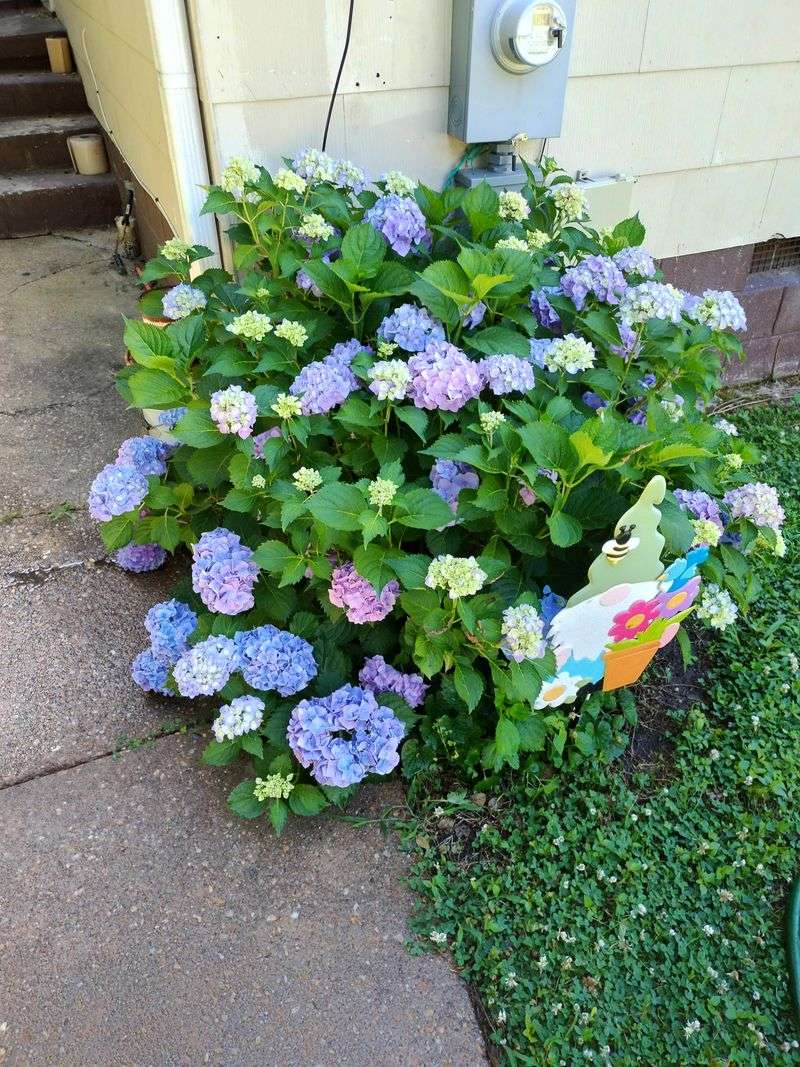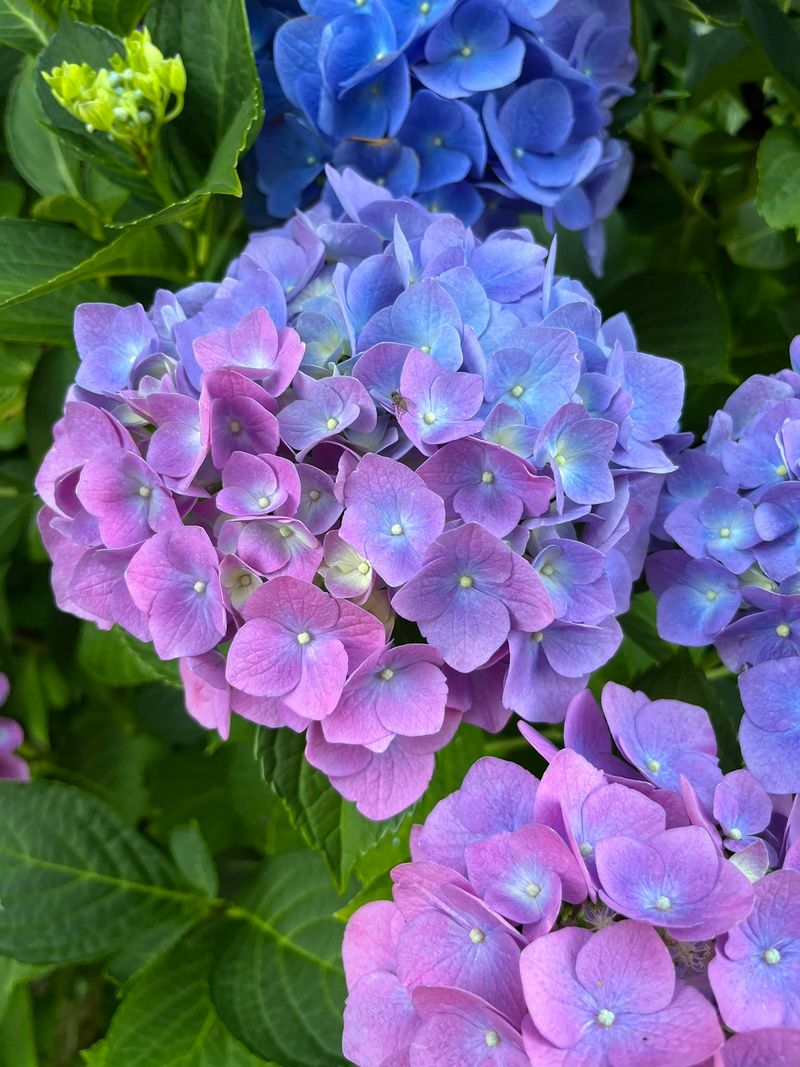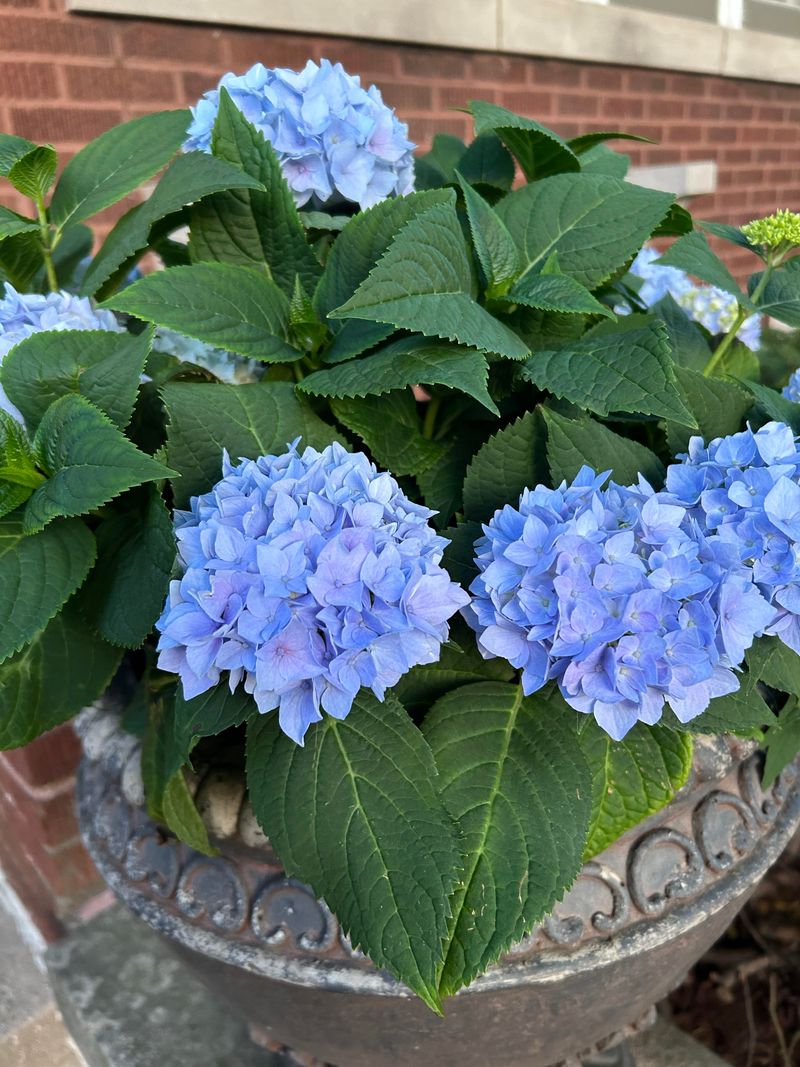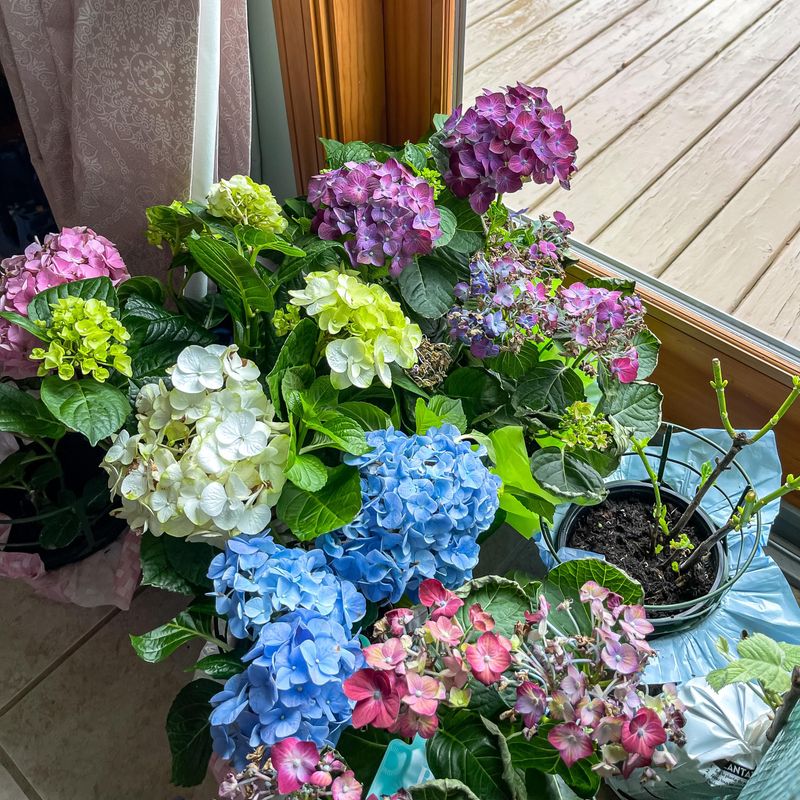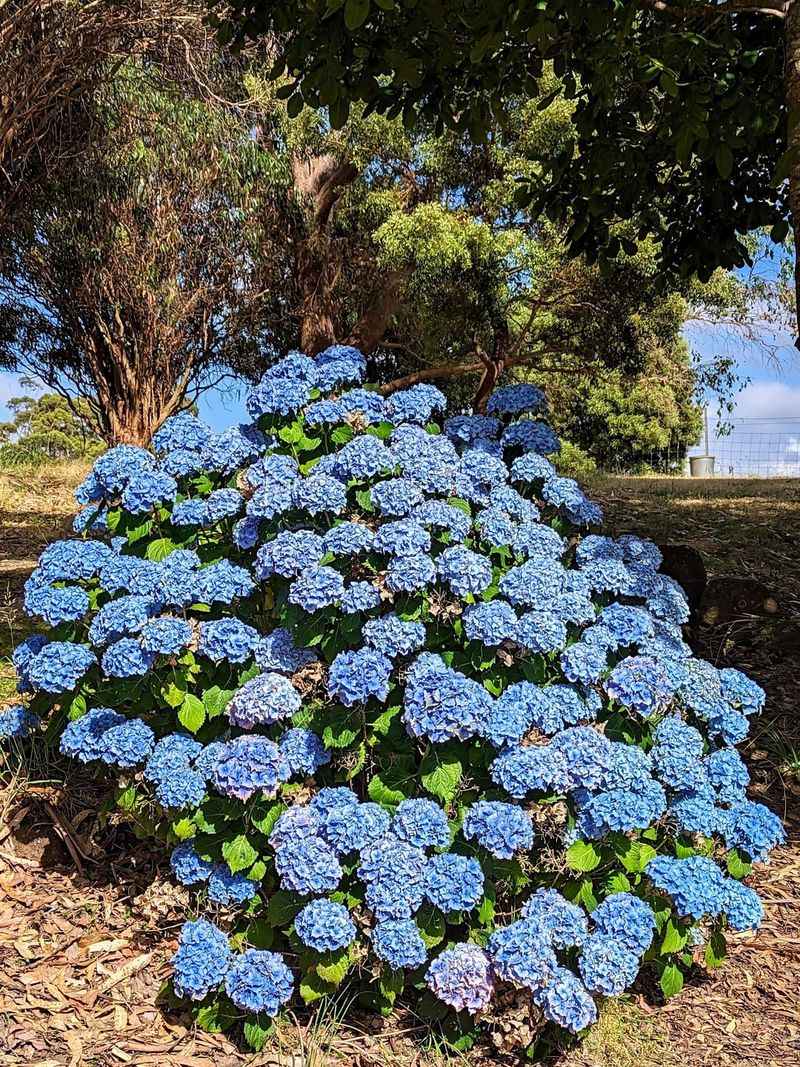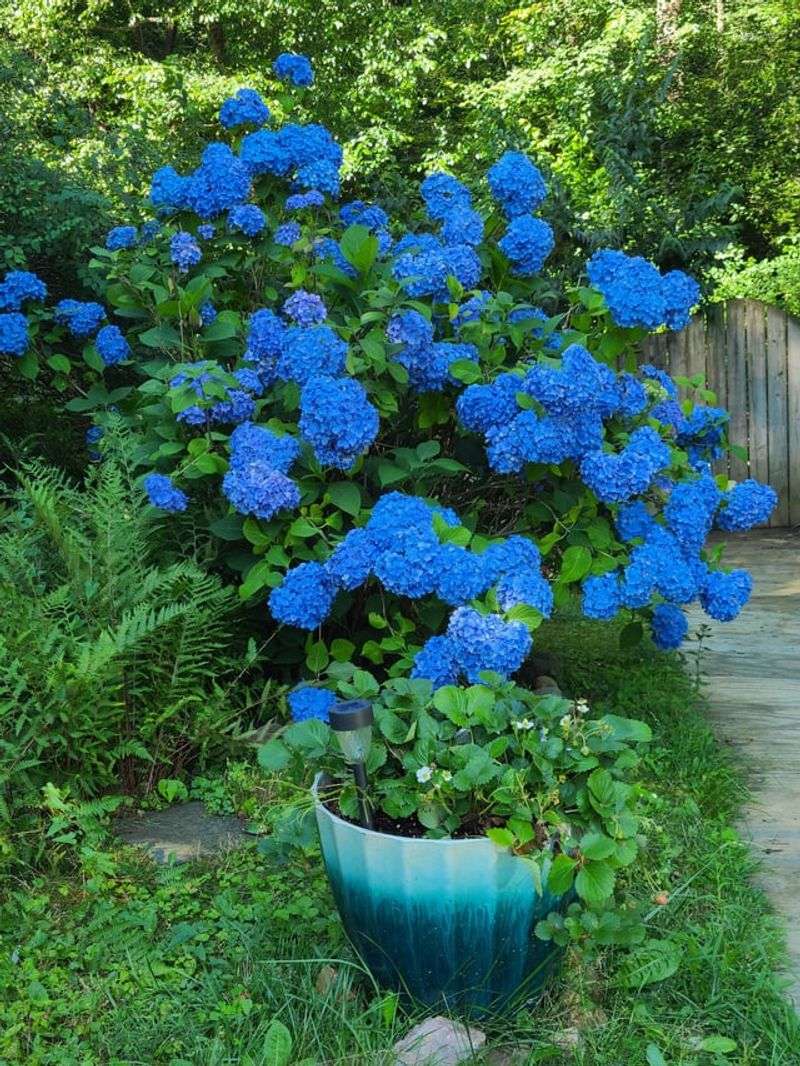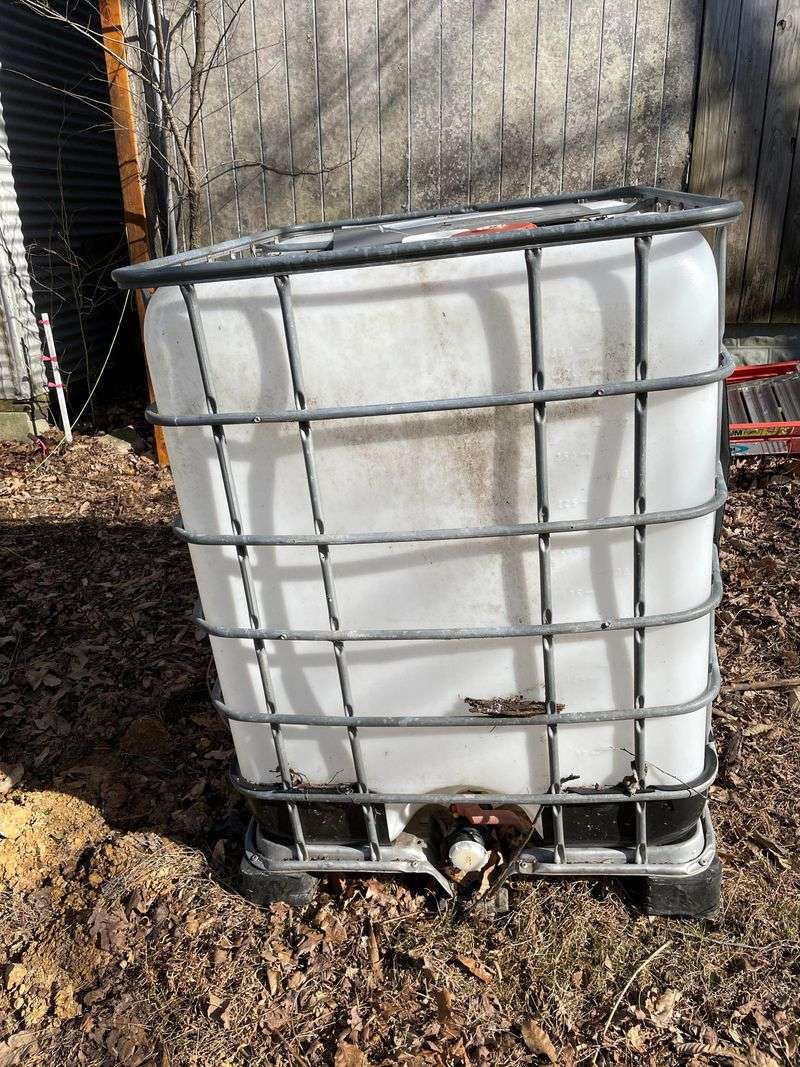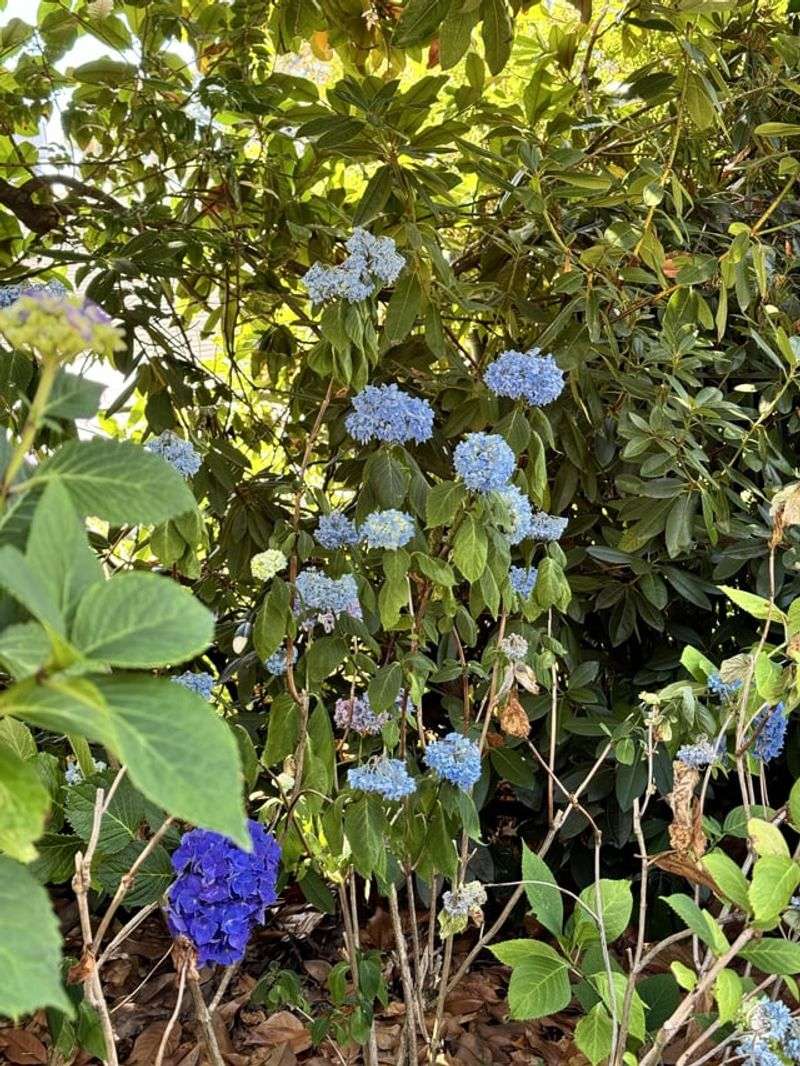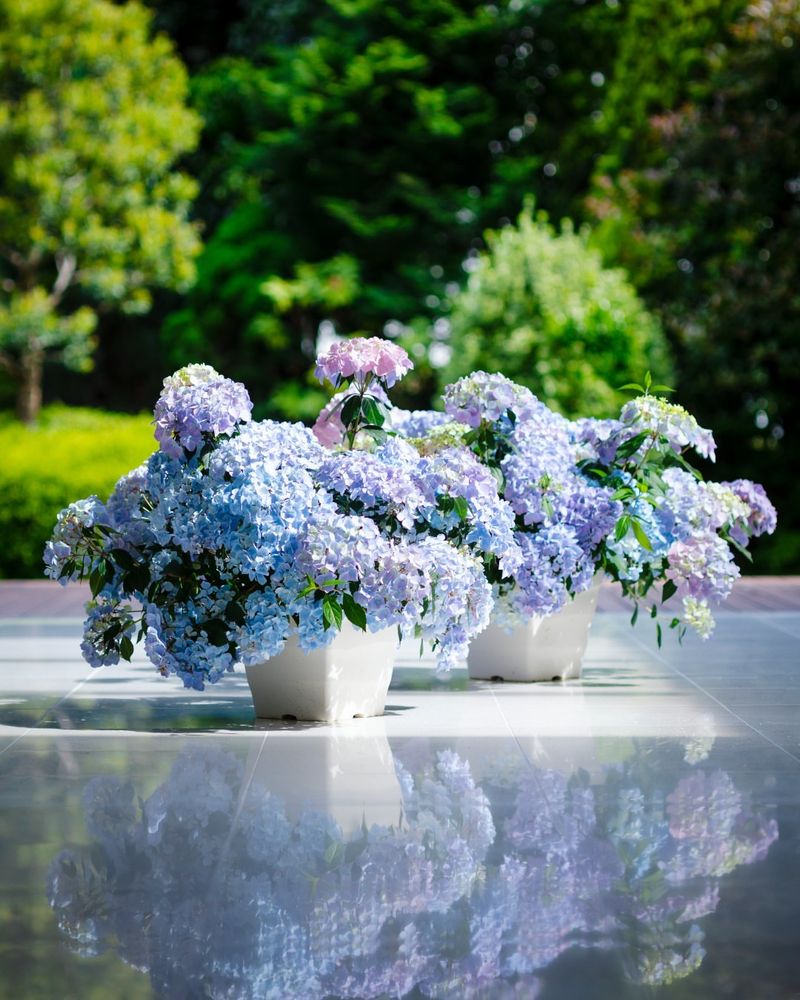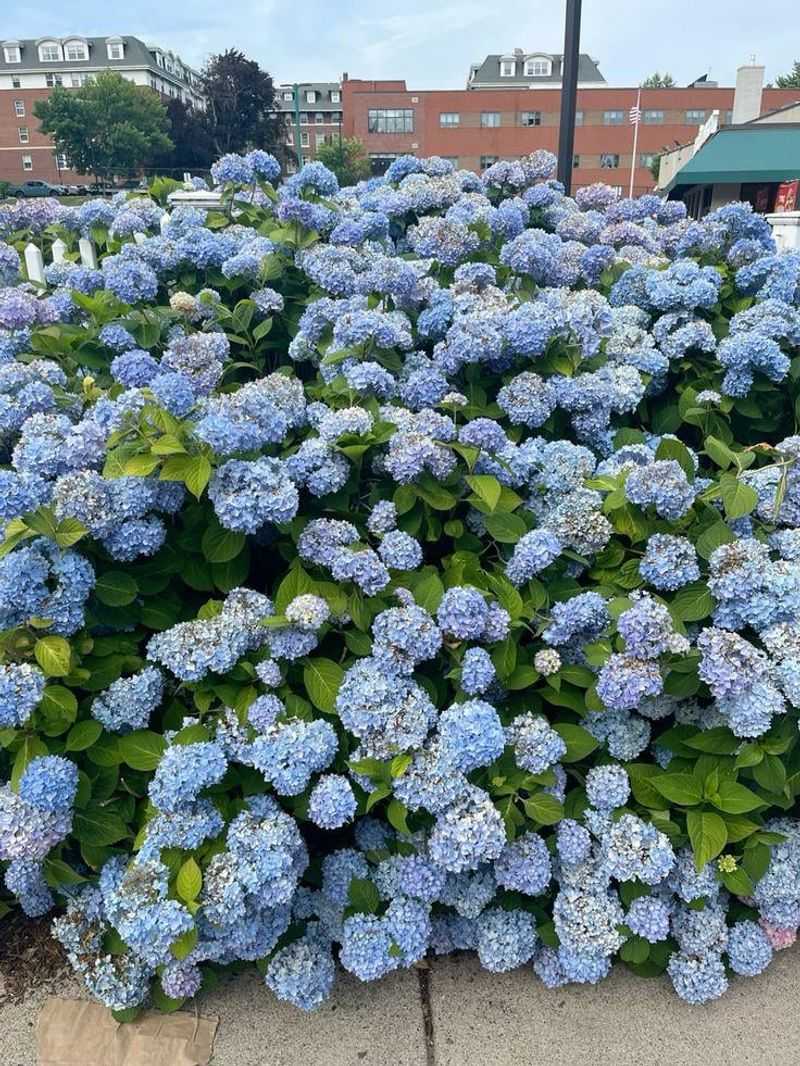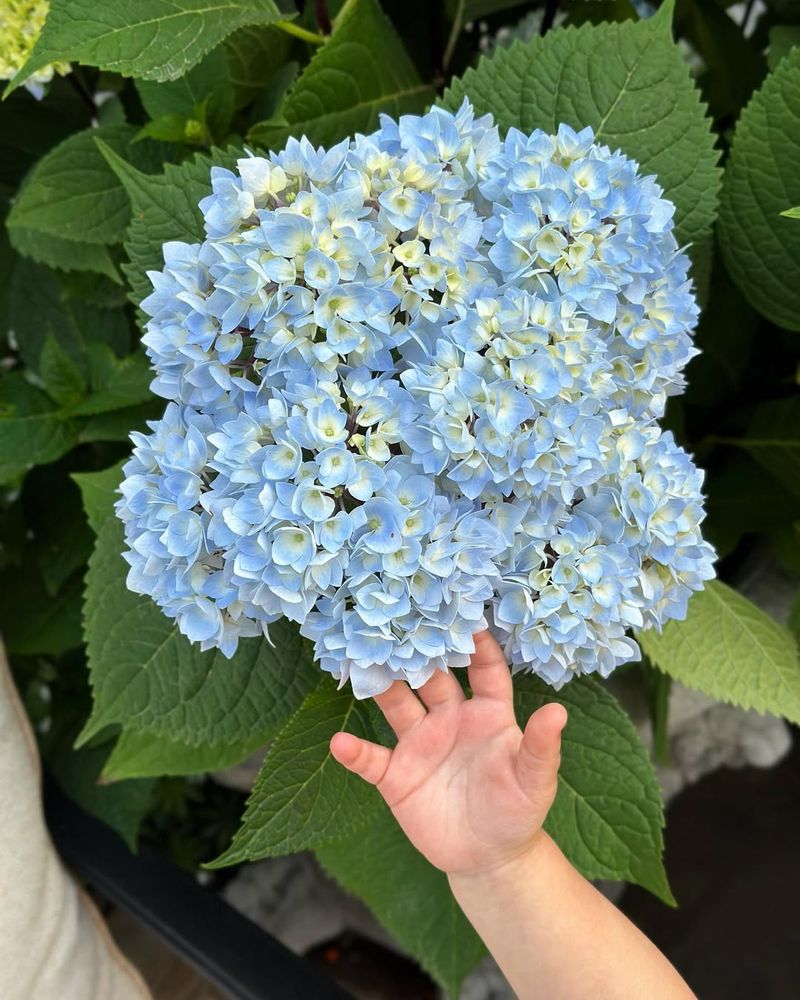Changing pink hydrangeas to that dreamy blue isn’t just some garden myth—it actually works, and it’s way more fun than I expected. I still remember the first time mine started turning blue, and I may have squealed a little.
It takes a few smart moves, a bit of patience, and the right touch of science (but nothing complicated, I promise). Once you get the hang of it, keeping that color all season feels like a total win.
Here are the 15 steps that helped me make the switch and keep the blue blooming strong.
1. Test Your Soil pH
Grab a soil testing kit from your local garden center to figure out what you’re working with. Hydrangeas turn blue in acidic soil (pH 5.5 or lower) and pink in alkaline soil (pH 6.5 or higher).
The test results give you a starting point for your blue-bloom journey. Most garden soils hover around neutral (pH 7), so you’ll likely need to make some adjustments to achieve that gorgeous blue color.
2. Choose the Right Hydrangea Variety
Not all hydrangeas change color! Only certain varieties, particularly Hydrangea macrophylla (bigleaf hydrangea), respond to soil pH changes. White hydrangeas and oakleaf varieties won’t change no matter what you do.
Look for popular color-changing varieties like ‘Endless Summer’, ‘Nikko Blue’, or ‘Penny Mac’. Ask at your local nursery specifically for hydrangeas that can shift from pink to blue.
3. Apply Aluminum Sulfate
Aluminum sulfate is your secret weapon for blue blooms. This compound both lowers soil pH and provides aluminum, which hydrangeas need to produce blue pigments. Mix 1 tablespoon per gallon of water for established plants.
Apply the solution every 4-6 weeks during the growing season, keeping it away from the stems and leaves. Water thoroughly before and after application to prevent root burn and help the solution penetrate the soil.
4. Use Coffee Grounds
Coffee grounds make an excellent natural acidifier for your hydrangea soil. Sprinkle used coffee grounds (after brewing your morning cup) around the base of your plants once a week, then gently scratch them into the top layer of soil.
The grounds break down slowly, providing a gentle, sustained pH adjustment. As a bonus, worms love coffee grounds and will help improve your soil structure while they feast on this caffeinated treat.
5. Add Pine Needles Mulch
Pine needles make fantastic mulch for hydrangeas when you’re aiming for blue blooms. They naturally acidify the soil as they break down over time, creating the perfect environment for developing blue pigments.
Apply a 2-3 inch layer around your plants in spring, keeping the mulch a few inches away from the stems. The pine needles also help retain moisture and suppress weeds, giving your hydrangeas multiple benefits beyond just color enhancement.
6. Switch to Acidic Fertilizers
Look for fertilizers specifically labeled for acid-loving plants like azaleas, rhododendrons, or blueberries. These fertilizers typically have higher nitrogen content and help maintain the soil acidity needed for blue blooms.
Avoid fertilizers high in phosphorus (the middle number in the N-P-K ratio), as they can block aluminum uptake. A good ratio would be something like 12-4-8 or 10-5-4, applied according to package directions during the growing season.
7. Incorporate Peat Moss
Mix peat moss into your soil when planting new hydrangeas or as a top dressing for established plants. This natural material significantly increases soil acidity while improving drainage and water retention.
For new plantings, mix equal parts peat moss with your garden soil. For established plants, gently work 1-2 inches of peat moss into the top layer of soil around the drip line of your hydrangea, being careful not to disturb the roots.
8. Water with Vinegar Solution
Create a mild vinegar solution to water your hydrangeas occasionally. Mix one tablespoon of white vinegar per gallon of water, and use this solution once every two weeks as a supplement to regular watering.
This gentle acidifier works gradually to lower soil pH. Always water with plain water first to prevent the vinegar solution from directly contacting dry roots, which could cause damage to your precious plants.
9. Avoid Lime and Wood Ash
Keep lime and wood ash far away from hydrangeas you want to turn blue! These materials make soil more alkaline (higher pH), pushing blooms toward pink rather than blue.
Be careful about what you add to nearby garden areas too. Lime and ash can leach into the soil around your hydrangeas during rainy weather, potentially undoing all your hard work to achieve those beautiful blue blooms.
10. Apply Soil Sulfur
Garden sulfur is a slower-acting but longer-lasting solution for acidifying soil. Sprinkle elemental sulfur around your hydrangeas according to package directions, typically 1/4 cup per established plant, and gently work it into the top inch of soil.
Unlike aluminum sulfate, sulfur works gradually over several months. Apply in early spring for summer blooms, and reapply annually to maintain the acidity needed for vibrant blue flowers throughout the growing season.
11. Collect Rainwater for Irrigation
Tap water often contains minerals that can make your soil more alkaline over time. Set up rain barrels to collect rainwater, which is naturally slightly acidic and free of the lime often found in municipal water supplies.
Use this collected rainwater for your hydrangeas whenever possible. Your plants will appreciate both the purity of the water and its slight acidity, helping maintain the blue color you’re working so hard to achieve.
12. Maintain Consistent Moisture
Hydrangeas need consistent moisture to properly absorb the aluminum that creates blue pigments. Set up a regular watering schedule, aiming to provide about 1 inch of water weekly, including rainfall.
Consider installing a drip irrigation system to deliver steady moisture directly to the roots. Proper hydration ensures your plants can effectively take up the aluminum and other nutrients needed to maintain their blue color throughout the blooming season.
13. Monitor pH Regularly
Soil pH can change over time due to rainfall, fertilizers, and natural processes. Test your soil every 2-3 months during the growing season to track changes and adjust your acidifying treatments as needed.
Keep a garden journal to record your pH readings and treatments. This record-keeping helps you understand what works best in your specific garden conditions and allows you to fine-tune your approach for the bluest possible blooms.
14. Apply Bluing Tonic Monthly
Create a special hydrangea bluing tonic by mixing 1 tablespoon aluminum sulfate, 1 tablespoon vinegar, and 1 gallon of water. Apply this solution monthly during the growing season to reinforce the acidic conditions needed for blue blooms.
Water your plants thoroughly with plain water before applying the tonic to prevent root burn. This regular maintenance helps counteract the natural tendency of many soils to return to their original pH over time.
15. Protect From Alkaline Runoff
Be mindful of water runoff from concrete foundations, walkways, or limestone gravel that can make the soil more alkaline. Create a barrier or plant your hydrangeas away from these structures to maintain soil acidity.
Consider installing a small trench or French drain to divert alkaline runoff away from your hydrangeas. You can also create raised beds filled with acidic soil mix to give your blue hydrangeas their own protected growing environment.

